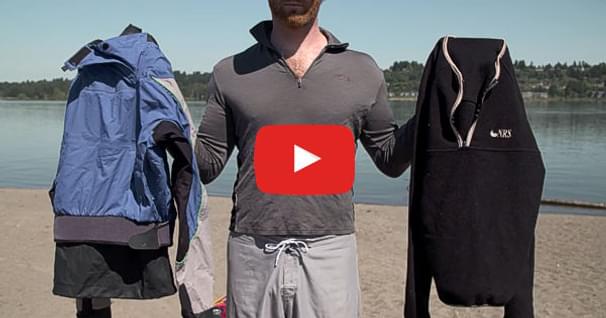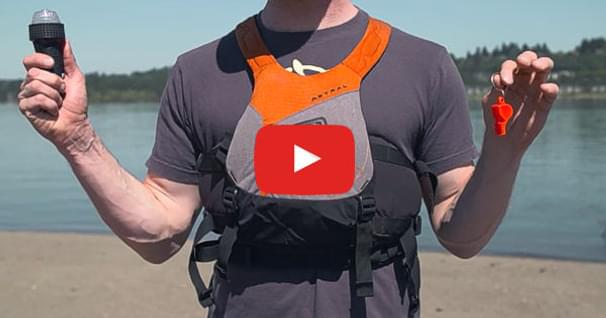What Happens If I Flip?
Got it? Take the Quiz!
What Happens if I Flip?
Paddlers often say that we're all "between swims." Flipping is always a possibility, and if you end up in the water paddlers call that swimming. There are many ways to get back in a kayak. With practice, you can do some of these on your own, and some require the help of a buddy. We're going to quickly demonstrate a few different methods for getting back into a kayak.
If you're paddling a sit-on-top this video may be sufficient. But to master some of the more advanced techniques, especially for sit-inside kayaks, getting some professional instruction is a great idea.
Getting back on a sit-on-top kayak is the simplest situation. First, be sure your kayak floating right side up. If it's not, turn it over by pushing on one side and pulling on the other. Next, if you're paddling with a buddy ask them to stabilize your boat. Even if your friend isn't right there, don't worry. You should still be able to climb back aboard your kayak by yourself, especially if you've practiced the technique before.
Swim to the back of you kayak and pull your chest on top of the boat. It helps to start with your legs behind you at the surface, then kick with your legs as if you’re getting out of a swimming pool. Slide your body toward the cockpit by pulling yourself towards it with your arms while staying low and allowing your legs to hang off either side for stability. Once you reach the cockpit, sit up straddling the boat and swing your legs through the water until you can sit low in the seat and pull your feet on top. Grab your paddle, and you’re ready to go.
50 years of lightweight, maneuverable, high-performing kayaks.
Check out this interview with Tom Keane, Eddyline Kayaks Co-Owner, on their journey!
Another variation is to climb on from the side just in front of the seat where the side of the boat is the lowest. Again, start with your feet at the surface and kick to pull your chest onto the boat. Scoot your hips up, and then twist into the seat. This works with more stable boats, or when gear on the deck makes it hard to scoot down from the end.
Remember to practice in real world conditions. Since you’re most likely to flip in wind and waves, don’t just practice in a calm harbor.
With a sit-inside kayak things are more difficult. Often they’re less stable and when they flip, they can fill with water, which makes them way less stable. We don’t have time to fully teach these skills in this video, but we want you to know what’s possible.
The most common method is called an assisted re-entry, and as the name implies it relies on teamwork. The paddler who is still in her boat helps the swimmer by steadying his kayak as he gets back in. Once things are secure, and the situation allows, pump out the water. You can also drain the boat before helping a swimmer back in, if time allows. It’s a reliable method, but again, requires some practice and teamwork to pull off, especially in rough conditions.
Make sure that your sit-inside has bulkheads, watertight compartments in the front and back to keep it from sinking, even when the cockpit fills with water. If it doesn’t, get a set of inflatable air bags at your local paddling shop.
These techniques are easy, and fun to learn if you take a class. And if you have a sit-inside kayak, we recommend you take one. Check with your local paddling shop or go online to find instructors in your area. And remember, with any of these techniques, it’s important to practice them in the places you actually use them. That’s what happens when you flip. It’s nothing to worry about if you’ve practiced what to do.
And remember: "Be smart, Be safe, and Have fun."
paddling.com has partnered with the United States Coast Guard to bring you this 8-part "Safer Paddling Series" featuring ACA-certified instructors Kate Ross Kuthe and Paul Kuthe. Watch them all as Paul and Kate share valuable safety tips, paddling technique pointers, and other various gear tips.
Related Articles
When you're out on the water, you have to take into account two important factors — the…



